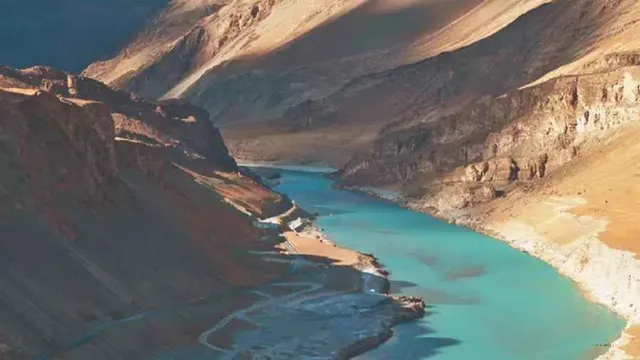- By Ajeet Kumar
- Fri, 25 Apr 2025 08:45 PM (IST)
- Source:JND
Following the deadly terrorist attack in Pahalgam, the Ministry of External Affairs announced a series of strong measures in response, including the abeyance of the Indus Waters Treaty "with immediate effect, until Pakistan credibly and irreversibly abjures its support for cross-border terrorism."
But what exactly is the Indus Waters Treaty, and why does its suspension matter? How could India's move impact Pakistan's sinking GDP?
Indus Waters Treaty
The Indus Waters Treaty was signed in 1960, following nine years of negotiations between India and Pakistan, with the assistance of the World Bank, which is also a signatory. The negotiations were initiated by former World Bank President Eugene Black. Recognised as one of the most successful international treaties, it has endured frequent tensions, including conflict, and has provided a framework for irrigation and hydropower development for over half a century. Former US President Dwight Eisenhower described it as "one bright spot ... in a very depressing world picture that we see so often."
The Treaty allocates the Western Rivers (Indus, Jhelum, Chenab) to Pakistan and the Eastern Rivers (Ravi, Beas, Sutlej) to India. At the same time, the Treaty allows each country certain uses of the rivers allocated to the other. The treaty gives India 20 per cent of the water from the Indus River System and the rest 80 per cent to Pakistan.
The preamble of the treaty says, "The Government of India and the Government of Pakistan, being equally desirous of attaining the most complete and satisfactory utilisation of the waters of the Indus system of rivers and recognising the need, therefore, of fixing and delimiting, in a spirit of goodwill and friendship, the rights and obligations of each in relation to the other concerning the use of these waters and of making provision for the settlement, in a cooperative spirit, of all such questions as may hereafter arise in regard to the interpretation or application of the provisions agreed upon herein, have resolved to conclude a Treaty in furtherance of these objectives, and for this purpose have named as their plenipotentiaries."
How the Treaty works?
According to the World Bank, the Treaty sets out a mechanism for cooperation and information exchange between the two countries regarding their use of the rivers, known as the Permanent Indus Commission, which has a Commissioner from each country. The Treaty also sets forth distinct procedures to handle issues which may arise: "questions" are handled by the Commission; "differences" are to be resolved by a Neutral Expert; and "disputes" are to be referred to an ad hoc arbitral tribunal called the "Court of Arbitration."
As a signatory to the Treaty, the World Bank's role is limited and procedural. In particular, its role in relation to "differences" and "disputes" is limited to the designation of individuals to fulfil certain roles in the context of Neutral Expert or Court of Arbitration proceedings when requested by either or both of the Parties.
Past disputes
In September 2024, India sought changes to the Indus Water Treaty and formally notified Pakistan of its intention to amend the pact. The longstanding dispute concerned the Kishanganga and Ratle hydroelectric projects, prompting India to seek a modification to the treaty. Pakistan had objected to the building of the Kishanganga (330 megawatts) and Ratle (850 megawatts) hydroelectric plants by India, saying that it violates the provisions of the treaty.India insisted on its right to build these projects and holds that their design is fully in compliance with the treaty guidelines.
The Indus Waters Treaty was in the spotlight in the aftermath of the Pulwama attack in 2019. The treaty has been criticised for being too generous to Pakistan even when it has continued to promote terror in India. The then Union Water Resources Minister Nitin Gadkari had declared that water from the eastern rivers, which earlier used to flow downstream to Pakistan, will be diverted to Jammu and Kashmir and the Punjab region.
Prime Minister Narendra Modi, after the Uri terror attack in 2016, had said that blood and water can't flow together. 'Rakt aur paani ek saath nahin beh sakta' (blood and water cannot flow together)."
Why is Indus water crucial for Pakistan's GDP?
According to reports, the Indus Basin rivers are crucial to Pakistan’s economy, contributing 25 per cent to the national GDP and playing a key role in ensuring food security. About 80 per cent of the country’s farmland is irrigated by the Indus system, which supports over 60 per cent of the population either directly or indirectly. Cities like Lahore, Karachi, and Multan depend on this water source for drinking and industrial needs.
(With inputs from agency)

